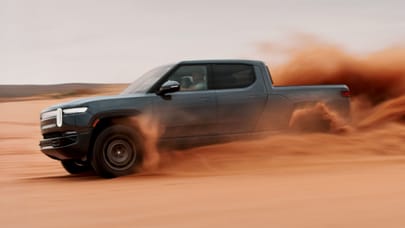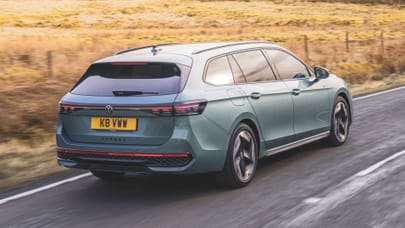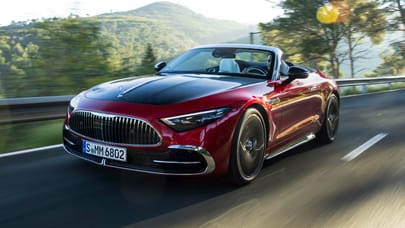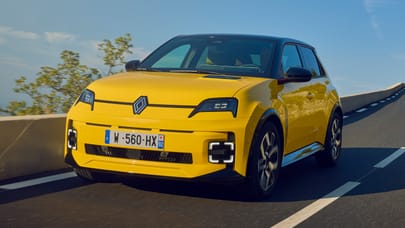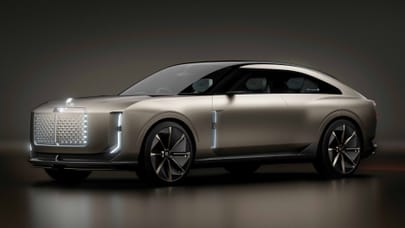
Top Gear drives the new Peugeot 208
One thing is immediately clear on this all-new Peugeot 208 - it's not as bad as the 207 or 206. Admittedly, this isn't an achievement worthy of any Nobel Prize, but still, it's crystal from the outset and even before you've sat in it, that the 208 is now a serious contender in the supermini market.
‘Serious contender' and ‘Peugeot' are not words that we're used to seeing in the same sentence, but the French have undergone a renaissance recently and the 208 is the zenith of that. Weight has been stripped off it - by as much as 170kg over the 207 - and real attention has been paid to the design inside and out.
For instance, the 208 is 7cm shorter than the 207, but the new car has more rear legroom because Peugeot has fitted thinner front seats. Most of that 7cm cut has been from the front overhang, so it's a not-fond farewell to the 207's beaky nose.
Quality is also improved, and all bar the most basic trim level get a nifty touch screen in the dash. This controls everything from the sat nav to the radio to your iPod, depending on the options you tick, and it works really well - intuitive to use, good to look at. It certainly makes rivals feel a bit 20th Century.
Sitting in, there's something fresh and different. The steering wheel is tiny, and instead of looking at the instruments through it, the clocks are in a binnacle high on the dash-top, and you see them over the top of the wheel rim. It works brilliantly for us, pitting the speedo and rev-counter an easy glance away from the road. But other drivers, who have their seat more reclined and the wheel higher, found the wheel cut right across the dials. Your mileage may vary.
And there's a huge range of engines to choose from, from a 1.0-litre petrol with 68bhp to a 1.6-litre 114bhp diesel - and all bar the more powerful petrols emit under 100g/km of CO2, which is an impressive achievement.
The cheapest engines are the new three-cylinder petrols, in 1.0 and 1.2 sizes. Can't imagine the 1.0 is going to get the juices flowing, but the 82bhp 1.2 is a bit of a sweetie. It pulls from low revs all the way round the clock. The sound is an enthusiastic chatter when you cane it (as you must, much of the time, and that's the fun of it), but it subdues politely on the motorway.
The other popular engine will be the 1.4 petrol, which is the high-tech fruit of Peugeot's co-operation with Mini. But alongside the little triple, it's barely more powerful and notably worse on CO2 - 129g/km plays 104. Still, that 1.4, or the related 1.6, are also fine engines to use. None of them are exactly quick, but as with any good small car, they're happy to be wrung out until their pips squeak.
Top Gear
Newsletter
Thank you for subscribing to our newsletter. Look out for your regular round-up of news, reviews and offers in your inbox.
Get all the latest news, reviews and exclusives, direct to your inbox.
But - you sensed that word coming, didn't you - if you're after the best-handling supermini, you'll still head for a Ford dealership. The Fiesta manages to trump the Pug for precision and fun, because it rewards more. This isn't as important in a supermini, but we're all drivers here at TG.com, so even in a supermini we still like to see some sort of interaction between man and machine.
To be fair to the Peugeot, it rides well. The handling is perfectly neutral and precise, and sharpened by that small steering wheel. But it all feels a bit distant, like you're steering a remote control car.
Which isn't to say you shouldn't look at this if you're thinking of buying a supermini. If nothing else, Peugeot deserves some extra footfall in its dealerships as a reward for the colossal improvement it's made over the 207. The 208 is much, much better. But still not quite good enough.
Trending this week
- Car Review
Ferrari F80
- Top Gear's Top 9
Nine production cars that weren't as good as their concepts





